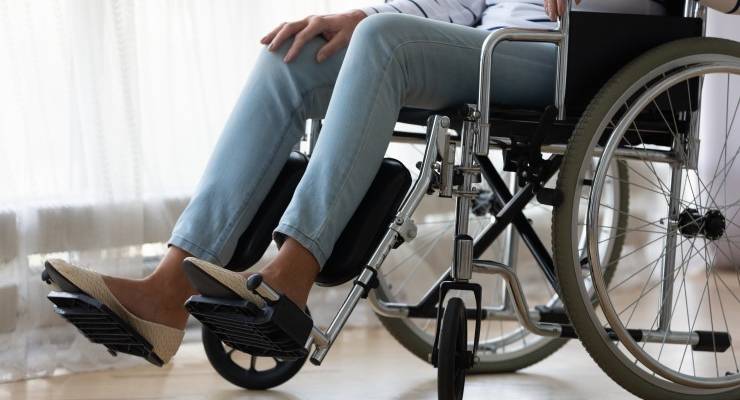
The National Disability Insurance Scheme faces a reckoning. The Own Motion inquiry into supported accommodation from the scheme’s quality and safeguards commission has found that over the past four years, disabled people living in group homes were abused more than 7000 times.
Nearly five times a day, a disabled person was hurt, abused or assaulted in their home — and they are just the incidents reported to the commission.
People with disability who live in group homes often have the most support needs and the least say over their lives. They are mostly people with an intellectual disability, and many have lived in group homes and institutions for most of their lives.
There were 28,018 disabled people living in group homes — also known as supported independent living (SIL) — in September last year. This is a small group out of the more than 500,000 disabled people who use the NDIS but are being hurt at a horrifically disproportionate level.
The inquiry heard about verbal abuse, assault, not responding to an injury, sexual assault, emotional abuse through coercion, physical and sexual abuse. The list of incidents makes for gut-wrenching reading.
None of the inquiry’s findings should come as a surprise to anyone following the disability royal commission, or anyone who remembers the 2015 Senate inquiry into abuse of disabled people. They should be no surprise to anyone who read the NSW ombudsman’s reports on group homes and unexplained deaths of disabled people.
Violence and abuse against disabled people have been going on for a long time, and are widespread and particularly acute in certain places — such as those hidden away from the community and where disabled people are grouped together. And while disabled people are forced to stay in these places, violence and abuse will continue.
Before the NDIS, people with disability, mostly people with an intellectual disability, often lived in large government-owned and -run institutions and in group homes. Alongside the NDIS rollout, people who lived in institutions moved into group homes and then the administration of these homes passed from government to non-government disability service providers. The disabled people who lived there — and who often had little say in it — were handed over along with homes, the staff and the culture.
The move from institutions into the community was one that disabled people fought for decades, because of the abuse and violence so many experienced living in this type of accommodation.
Leading disability advocate Jan Daisley talked about living in an institution as part of the Shut In campaign to close them: “You were abused, you were told what to do and how to do it and when to do it, and you were not allowed to be a person. You were just a number in a room.”
The move into group homes was meant to be a stepping stone into full community living, but along the road to inclusion, too many disabled people have become stuck in a system that dehumanises them, and now turns them into a commodity.
When state and territory governments divested themselves of the group homes, they also divested themselves of the responsibility to ensure that disabled people were free from violence and abuse.
The biggest providers, such as Life Without Barriers, Scope and Endeavour, took on these often outdated and rundown homes, with their outdated practices as well as the questions about whether group homes can even be a good place to live for disabled people.
The NDIS moved funding for disability support from the organisation to the individual, and the associated change in culture that was meant to flow from this positions disabled people as in control and having rights. But for many people with an intellectual disability, this didn’t happen. Their support was still mostly being delivered in groups, and the providers of those services pretty much offered the same support they did before the NDIS.
The commission inquiry points this out, noting that one of the main causes of the violence is “the capability and culture of the workforce, including the extent to which some support workers and management reflect the values and principles of the provider, and have the interests and quality of life of the people they support at the centre of how they undertake their work”.
For many disabled people in group homes, the same disability service provider is responsible for their home, their tenancy, their disability support, their recreation activities, their workplace, their day program, and even their support coordination. The commission heard about the huge problems that come from this service capture and linking of housing and support, looking at a number of disability service providers.
The NDIS has also done little to change the systems and cultures that enable abuse. A parliamentary inquiry into supported independent living in 2020 recommended stronger oversight and more funding so disabled people could choose who they lived with in group homes or get out of them if they wanted to.
The Joint Standing Committee on the NDIS also talked about how important it was to separate the provision of housing, tenancy and disability support and support coordination. There has been little progress on these recommendations.
Too many disabled people have little choice and no control over where they live, and instead are forced into environments with documented violence and abuse being widespread. This abuse is baked into the very systems that run these homes, and so it is the systems that have to change.
The NDIS, with all its billions of dollars, is responsible for changing this abusive system that it has built, funded and supported. Every single one of the 28,018 disabled people who live with this violence and abuse deserves so much better, and so much more.








Having private providers doing the governments work will always have this kind of result. Money is siphoned away and rights are lost with it.
Excellent analysis of a disability human rights issue that has gone on for many decades and no political will to stop it.
Back in the 1990s when Queensland closed its Intellectual Disability centres, it was a “heroic” coming together of contemporary social work theory and of what was then called economic rationalism / budget saving. Within the public sector both the Family Services department (which ran the two big Qld facilities) and Treasury were in happy agreement. It was also at a time when the Family Services Department had a very socialist-left Minister but within the Goss (Labor) Cabinet that was still as socially conservative as had been all Queensland governments, Labor and Country Party, through the 20th century. Put another way few in Cabinet took an interest in the issue and waved it through as a sop to their difficult colleague and her faction.
Like all government mandated changes only one new way was funded / allowed. To the extent that I was an outsider looking-in, I would have thought that, yes, for some clients the new living-in the community concept had some value but for most not so, not discounting that the large institutions were hardly a paragon of good care and management. And so it has proved.
A postcript: the said Minister and her Director General did not see out the Goss government as their several other failures saw them dumped.
Group homes and supported independent living are not the same. You can have supported independent living without being in a group home.
Very true. It would be useful to canvas other supported living solutions and what these might look like.
An obvious place to start is to introduce some independent accountability – ensure that the services coordinator that chooses the accommodation is not a provider.